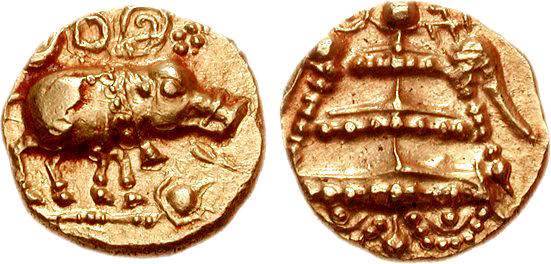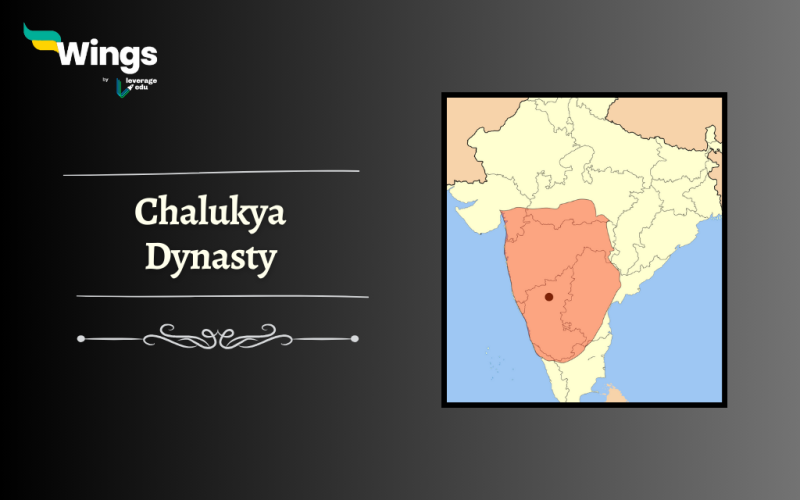The Chalukya Dynasty is an ancient Indian dynasty that left an indelible mark on history through its architectural marvels and rich cultural legacy. In the history of India, ruled many kings and dynasties. One of the many of them was this dynasty. In this blog, we will delve into the incredible history, art, and achievements of the Chalukyas, a dynasty that deserves to be celebrated and remembered for its remarkable contributions to Indian heritage.
Contents
Who Was The Founder Of Chalukya Dynasty?
The Chalukya dynasty was one of the most powerful and influential dynasties in Indian history. It emerged from the 6th to the 12th century CE in the Deccan region of India, primarily present-day Karnataka with Pulakeshin I as their founder.
Under his leadership, the Chalukyas began their conquests, expanding their territory and influence. Their ascent to power marked the beginning of an era characterized by innovation, patronage of the arts, and remarkable architectural achievements. The Western Chalukyas of Badami and the Eastern Chalukyas of Vengi were two prominent branches of the dynasty.
Also Read – Yadava Dynasty: History, Rulers, Administration & Decline
What was the History of the Dynasty?
- The Chalukya dynasty was founded by Pulakeshin I in 543 CE. He established his capital at Vatapi (modern Badami) in Karnataka. Under his rule, the Chalukyas expanded their territory to include most of Karnataka and Andhra Pradesh. Pulakeshin I also defeated the Pallavas of Kanchipuram in 574 CE, establishing the Chalukyas as the dominant power in southern India.
- Pulakeshin I was succeeded by his son, Kirtivarman I. Kirtivarman I continued to expand the Chalukya empire, defeating the Rashtrakutas of Malkhed in 609 CE. He also built several temples and other public works projects.
- The dynasty reached its zenith under the rule of Pulakeshin II (609-642 CE). Pulakeshin II was a brilliant military strategist and a wise ruler. He defeated the Harshavardhana of Kannauj in the Battle of Narmada in 618 CE, preventing the expansion of the Vardhana empire into southern India. Pulakeshin II also maintained friendly relations with the Sassanid Empire of Persia.

- After the death of Pulakeshin II, the Chalukya empire began to decline. The Rashtrakutas defeated the Chalukyas in 753 CE, bringing an end to the Badami Chalukya dynasty.
- The dynasty was revived in the 10th century CE by Tailapa II (973-997 CE). Tailapa II established the Chalukyas of Kalyani, which ruled over the Deccan plateau for over two centuries. The Chalukyas of Kalyani were great patrons of art and architecture. They built several magnificent temples, including the Virupaksha Temple at Pattadakal and the Hoysaleshwara Temple at Halebidu.
- The Chalukyas of Kalyani declined in the 12th century CE due to internal conflicts and invasions by the Hoysalas and the Yadavas. The last Chalukya ruler, Vikramaditya VI, died in 1189 CE, marking the end of the dynasty.
List of Rulers
Some of the notable Chalukya kings include:
| Rulers | Year of Rule |
| Pulakeshin I | 543-566 CE |
| Kirtivarman I | 566-609 CE |
| Pulakeshin II | 609-642 CE |
| Vikramaditya I | 655-680 CE |
| Vinayaditya II | 709-735 CE |
| Vikramaditya II | 735-746 CE |
| Tailapa II | 973-997 CE |
| Someshvara I | 1042-1068 CE |
| Vikramaditya VI | 1076-1126 CE |
The Branches of the Chalukya Dynasty
Their rule was divided among three interconnected yet distinct branches: the Chalukyas of Badami (543–753 CE), the Chalukyas of Kalyani (975–1189 CE), and the Chalukyas of Vengi (624–1070 CE).
The Chalukyas of Badami
They were the first Chalukya dynasty, and they ruled from the 6th to the 8th centuries CE. Their capital was Badami, which is now a small town in the state of Karnataka, it was the capital of the Early Chalukyas and is often referred to as the “Cradle of Chalukya Art.”
The Chalukyas of Badami were great patrons of art and architecture, and they built some of the most beautiful temples in India, including the Pattadakal temples, which are a UNESCO World Heritage Site. It boasts a unique blend of Dravidian and Nagara architectural styles, showcasing the dynasty’s ability to harmonize diverse influences.
Kalyani Chalukyas
The Chalukyas of Kalyani were the second Chalukya dynasty, and they ruled from the 10th to the 12th centuries CE. Their capital was Kalyani, which is also in the state of Karnataka. The Chalukyas of Kalyani were also great patrons of art and architecture, and they built some of the most iconic temples in India, such as the Hoysaleswara Temple in Halebidu and the Chennakeshava Temple in Somanathapura.
The Chalukyas of Vengi
The Chalukyas of Vengi were the third Chalukya dynasty, and they ruled from the 7th to the 12th centuries CE. Their capital was Vengi, which is now in the state of Andhra Pradesh. They were also great patrons of art and architecture, and they built some of the most beautiful temples in Andhra Pradesh, such as the Pancharama temples in Bhimavaram and the Mukhalingam Temple in Srikakulam.
Legacy
The Chalukyas were also great warriors and administrators. They were renowned for their military prowess. Pulakeshin II, one of the most illustrious rulers of the dynasty, defeated the mighty Harsha Empire, marking a significant milestone in Chalukyan history. This victory solidified their dominance in the Deccan region and allowed them to establish a vast empire.
They expanded their empire to cover large parts of southern and central India. They were also known for their religious tolerance. They patronized both Hinduism and Jainism. They were patrons of literature, contributing to the Kannada and Sanskrit languages. Their rule also witnessed advancements in trade, administration, and art.
The Decline of the Chalukyas
Despite their achievements, the Chalukya Dynasty began to face internal and external challenges. Conflicts among the ruling factions and invasions by the Cholas and other dynasties weakened their grip on power.
By the end of the 12th century, the Chalukya Dynasty had largely faded into obscurity. It ruled over large parts of southern and central India for over 600 years, but its legacy lives on in the magnificent temples and sculptures that it built. The Chalukyas were one of the most important dynasties in Indian history, and their contributions to art, architecture, and culture are still felt today.
FAQs
Pulakeshin I established the Chalukya dynasty in 543 CE. Pulakeshin I captured Vatapi (modern Badami in the Bagalkot district, Karnataka) and made it his capital. Pulakeshin I and his descendants are mostly known as “The Chalukyas of Badami”.
The dynasty that ruled over Kannadigas is known as the Kalyani Chalukya due to its capital located at Kalyani, which is present-day Basavakalyan in the Bidar District of Karnataka. It is also referred to as the Later Chalukya, as it is believed to be connected to the 6th-century Chalukya dynasty of Badami.
As per the tradition and the majority of scholars, Rashtrakuta Dantidurga, who founded the Rashtrakuta Empire, overthrew the final ruler of the Badami Chalukyas in the 8th century CE.
Relevant Blogs
That’s all about the Chalukya Dynasty! If you want to know more about topics like this, then visit our general knowledge page! Alternatively, you can also read our blog on general knowledge for competitive exams!
 One app for all your study abroad needs
One app for all your study abroad needs














